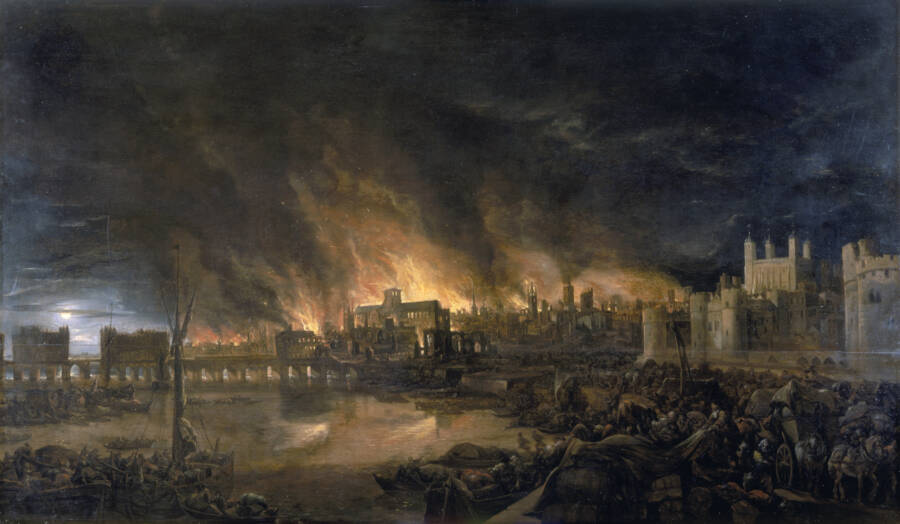The Great Fire Of London In 1666

Wikimedia CommonsThe Great Fire of London wiped out a significant portion of the city — and nearly all of the plague-carrying rodents that inhabited it. Some say Nostradamus saw it coming.
On Sept. 2, 1666, a small fire broke out in Thomas Farriner’s bakery on Pudding Lane in London. While fires weren’t uncommon in those days, none had been quite so devastating as this one.
According to Historic UK, when the Lord Mayor of London, Sir Thomas Bloodworth, was awoken and told of the fire, he replied, “Fish! A woman might piss it out!”
What Bloodworth, and many others, ignored was that London had been in the midst of a particularly hot, rainless summer. As a result, the wooden buildings were tinder-dry — and the fire spread rapidly. Soon enough, more than 300 houses were ablaze and the fire showed no signs of stopping.
Attempts to put the fire out using water-filled buckets were futile, and panic spread as quickly as the flames. For almost four days, the fire raged on, and King Charles II even ordered for the houses in its path to be pulled down to create a “fire-break.” Alas, it could not stop the raging fire.
King Charles II himself eventually joined the firefighting brigade, passing along buckets and buckets of water to try and put the flames out — once again, to no avail.
By Sept. 4, half of London was on fire. Then, it was suggested that gunpowder be used to blow up houses in the fire’s path, creating an even larger fire-break. Unfortunately, the sound of the explosion led rumors to spread of an invading French army, resulting in even more panic.
In the end, four-fifths of London turned to ash, including nearly all the civic buildings and 13,000 private residences. The inferno was finally snuffed out on Sept. 6, but the devastation was tremendous. London had to be almost entirely rebuilt.
It was an unpredictable calamity — or, was it?
Over 100 years before the Great Fire of London, Nostradamus had, possibly, foretold the event:
“The blood of the just will be lacking in London,
Burnt up in the fire of ’66:
The ancient Lady will topple from her high place,
Many of the same sect will be killed.”
While the total number of human deaths as a result of the Great London Fire is relatively low — many historians estimate the number was just six — some have suggested the “blood of the just” may refer to the millions of flea-carrying rats that had helped spread the Great Plague, also known as the Black Death, just one year earlier.
The fire may have devastated the city itself, but it also effectively put an end to the plague in London by killing off strains of the disease and the hosts that carried it.





